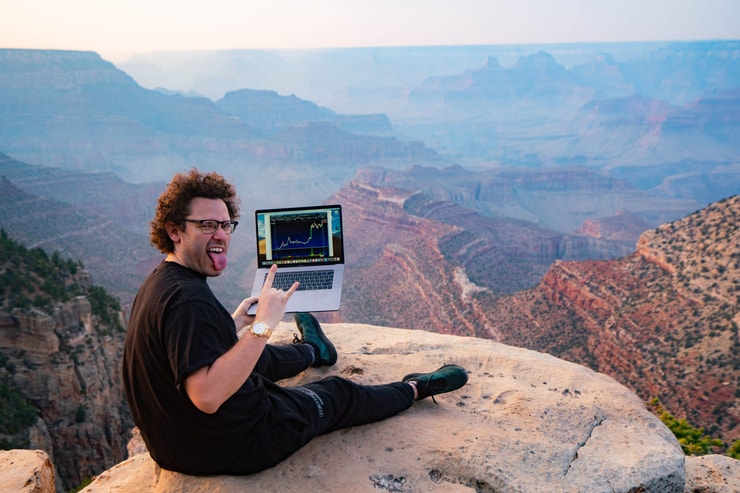Finding the best stocks to trade isn’t difficult in this market.
All you need is a high/low scanner.
However, just because you know which stocks you should be trading…doesn’t mean you’ll make money trading them.
The real skill, and what most traders mess up on, is their execution.
When should you buy?
When should you sell?
Take profits…or cut losses?
It might be a mystery to some, but not me.
And today, I’ll show you how I finessed and pulled in a quick 10% on last week’s hottest ticker symbols, MSP Recovery (NASDAQ: LIFW).
Pay attention because this same approach is what I’ll be using to make again this week.
What Makes a Great Stock to Trade?

2025 Millionaire Media, LLCMost penny stock traders all start their days the same way.
They open their laptops and look for the stocks with the biggest premarket moves.
I’m no different.
If you want to make a 10% gain on a day trade, then you need a stock that’s rocking 50%, 100%, 200%, or more in the premarket.
Snapping up 10% on those kinds of moves is a lot easier than trying to extract it from a stock that’s only up 20%.
However, not everyone is like me and keeps a list of stocks that made those big moves over the last few days or weeks.
Identifying a stock moving 50% in the premarket is as easy as running a scanner.
But knowing that a stock that’s up 50% in the premarket had also doubled the day before is next-level thinking.
And it’s not hard to do.
Just keep a notepad or spreadsheet and copy over the scans from the premarket and the end of the day.
This will help you identify stocks that are or are becoming multi-day runners.
And THAT’s what made LIFW such a fantastic stock to trade.
Analyzing the Charts
Take a look at the 5-minute chart below.
I’ve drawn horizontal lines at the various spots where the stock found resistance and reversed.
All of them came in around $0.24-$0.27.
A lot of traders get caught up in the specifics. This is the art form of trading, which I’ll show you in a minute.
For now, just remember that range.
Now, let’s dig into the premarket action on the day of the trade.
As the premarket session rolled on, shares lifted into that $0.24 area and found resistance.
After a short pullback, they broke through that area and began to consolidate right on top of that area around $0.262, close enough to that $0.27 area.
And it was holding as volume rose.
To me, this was a bullish sign the stock wanted to march higher.
After all, LIFW was up almost 400% from its original breakout.
Here’s where my trade analysis came into play:
- I knew the recent highs were right where the stock was trading
- Volume was picking up towards the open (important to see)
- The stock was up over 60% in the premarket after a big day before
For me, this gave me a pretty good indication that I could take a shot and try to ride this stock up in to the $0.30s.
I want to point out the two ways you could enter this trade.
The first was to wait for a dip at the open.
There was a small one down to $0.24 which would have been a great spot to take an entry since it was the lower end of the recent consolidation range.
Any meaningful break below that could be used as a stop.
I chose to wait until the stock had popped through resistance, giving me an extra layer of comfort.
If you look at the 1-minute chart, you’ll see there was huge volume on that second candlestick.
I used that candlestick for my entry knowing that I could stop out if we broke back down to $0.25.
That way, I’m getting a bit more out of my potential profits than I’m risking.
More Breaking News
- Analysts Predict Major Upswing for Semler
- DNN Stock Climbs: What’s Driving the Change?
- BBAI Faces Legal Storm: Stock Fluctuation Insights
Sure enough, the stock wobbled around $0.26-$0.28 for a few minutes and then popped right into $0.30 where I was able to take my exit.
Patterns & Executions

2025 Millionaire Media, LLCAll trades come down to the patterns that create the setups and the way we execute the plays.
Each is a separate skill that takes practice and patience.
After teaching thousands of students over the years, developing more than 30 into millionaire traders, I know what it takes to help folks climb the ladder of success.
That’s why I want you to join me in my upcoming webinar where I break down the most important skills and strategies you need to reach that next level.











Leave a reply